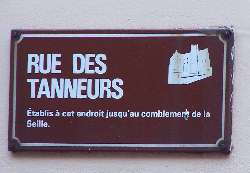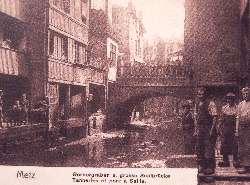LFRG: initials to remember
This was first posted on University of Northampton on July 24 2008. There are two items from July 2008 here.
I am guessing that for us there will be one really memorable event of this summer and that will be the founding of the LFRG. Now what does this stand for? It is the Leather Futures Research Group which has just been established at the University.
Formally speaking the idea of the group is to “develop concepts and solutions for the leather and leather using industries.” Associated with this are a number of key aspects:
The group will bring together all aspects of the University that have an interest in leather. There are a lot of these such as podiatry, fashion, environmental sciences, conservation and business and it has been suggested that if we look hard through the University we would easily bring a group of thirty or more key people together. We are really pleased that Friedmann Schaber in Design is one of the non BSLT members of the group. Fritz has extensive knowledge of the automotive trade world-wide having worked for Volkswagen as a designer. Some of his interests relate to new uses for leather.
It will involve identified individuals from throughout the world whose skills can make a significant contribution to the group. We already have a senior shoemaker involved
It will produce one significant paper per annum on a topic of relevance to the industry (over and above the research projects mentioned below)
To undertake studies and projects that introduce or develop leading edge thinking to any or all aspects of the leather supply chain from animal husbandry through to the long term ownership and use of leather products.
To provide an umbrella for projects related to the industry that do not fit any other structure within the University.
Cradle to Cradle Research Project, ready to start
Excitingly enough the LFRG has got itself off to a flying start having already won funding for a research project on the Cradle to Cradle concept I have already discussed in earlier postings. This one is entitled “a new approach to leather for consumer goods” and will look at the length and durability of certain types of tannage, in particular the thermodynamics of metal-polyphenol complex formation using a range of polyphenolic compounds and a range of transition elements. The work will coordinate with the fashion department, especially related to footwear, so that the design will fit with the material and the decisions about what happens to the article at end of life. We are increasingly aware that you cannot put a boundary around a leather and say it is good or bad without knowing how it will be used and disposed of in the final article.
This research project will certainly go ahead although a bit more funding will be needed for travel and some testing equipment and the like so we are hoping that interested companies will join the LFRG to be part of this and other discussions, and to share the IP developed. Very initial discussions have started in the footwear industry and there is no doubt to there is real interest, which we do hope will develop into something serious.
We have two other projects planned. One on a technical leather where we hope a consortium of businesses will do some joint funding and another on the uses of leather where sponsors are being sought. So if you or your business is interested in this or in sponsoring a specific project of your own, or just becoming a generally interested party, do let us know.
Mike Redwood
24th July 2008
POSTED ON
Metz: rue des tanneurs
One great thing about being interested in leather (except sometimes for spouses) is that almost every where you go leather has a historic presence. So here we are in Metz, on our way to the Outdoor show in Friedrichshafen, standing in the Rue des Tanneurs.
They are not hard to find these old “tanners’ streets”. Take a look close to the old centre and look for a stream. If there is a major river like the Danube in Ulm or the Moselle here look a spot where a smaller river or stream enters the main river. Here the tanners could soak and unhair the hides by hanging them in the water, obtain fresh water for tanning and dyeing, and quietly let all their wastes slide out and disappear in the main river stream.
Water and Effluent in the Sub-continent
This approach to our waste and water in our industry was the norm for many millennia until things began to change through the 20th century. We have lately seen that China is deeply worried by tannery effluent and only wants larger tanneries with the scale to have good effluent plants, and that actually use them. Both India and Pakistan have been dealing with tannery waste via common environmental treatment plants but questions are still asked about this aspect of the industry in Pakistan.
This is one of many areas that creates problems for the image of the Pakistan leather sector. It is lead by a few excellent companies but below them are a huge number of smaller businesses who find it hard to persuade the rest of the world that Pakistan is a good place to do business. Pakistan has a large raw material base, a long history of tanning, and many well trained staff who speak excellent English. So this is the moment to take advantage of the location changes resulting from the changes in China.
Pakistan Alumni
Such a project to address all these issues is on, via the Small and Medium Enterprise Development Authority (SMEDA) and I will be going out at the end of the July. Are you a Pakistani alumnus, or a business with interests in Pakistan? If so I need to hear from you. I will be trying to meet as many alumni as possible and should be spending time in all of the industry clusters.
Pakistan is one of the BSLT’s biggest and oldest sources of students. It would be good if together we could make a difference.
Mike Redwood
15th July 2008

